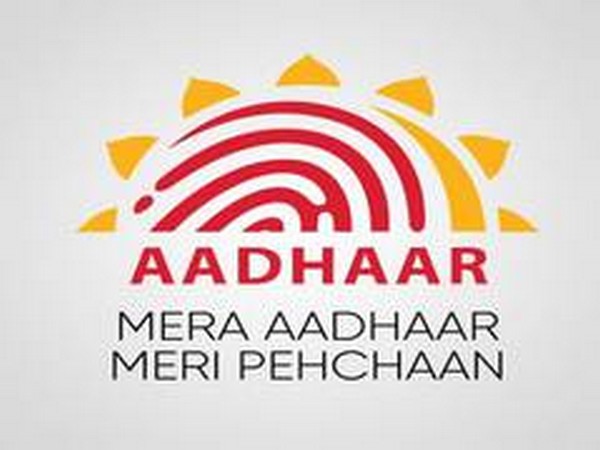UIDAI Launches Death Reporting Service to Prevent Aadhaar Misuse After Demise
The Aadhaar number, a 12-digit random and unique identification number issued by UIDAI, serves as a foundational ID for residents of India and NRIs.

- Country:
- India
In a critical step towards ensuring the integrity and accuracy of India's digital identity ecosystem, the Unique Identification Authority of India (UIDAI) has initiated a nationwide campaign to deactivate Aadhaar numbers of deceased individuals through proactive validation of death records. This initiative aims to prevent identity fraud, eliminate unauthorized use of dormant Aadhaar numbers, and uphold the sanctity of India’s unique identification framework.
With Aadhaar now playing a central role in authentication and access to public and private services, the presence of active Aadhaar numbers for deceased persons poses serious risks—ranging from impersonation and fraudulent claims to misuse in financial transactions and government benefit schemes. Recognizing this critical issue, UIDAI has rolled out multiple strategies and a dedicated portal to report and process such cases.
Aadhaar: A Secure Digital Identity Platform
The Aadhaar number, a 12-digit random and unique identification number issued by UIDAI, serves as a foundational ID for residents of India and NRIs. It enables biometric and demographic authentication across a wide array of services—from banking and telecom to welfare distribution and taxation.
Importantly, no Aadhaar number is reassigned once issued, even after the death of the holder. Therefore, unless actively deactivated, the number remains technically valid, creating a potential loophole for identity fraud, especially in cases where family members do not report the death to UIDAI or where the data is not synchronized with official death registries.
Deactivating Aadhaar After Death: A Multi-Source Approach
To combat this challenge, UIDAI has adopted a multi-pronged, data-driven strategy to collect death records, validate them, and deactivate Aadhaar numbers accordingly.
-
Collaboration with the Registrar General of India (RGI): UIDAI has partnered with RGI to access death records via the Civil Registration System (CRS).
-
So far, RGI has provided approximately 1.55 crore death records from 24 States/UTs.
-
After cross-verification and validation, around 1.17 crore Aadhaar numbers of deceased individuals have been successfully deactivated.
-
-
Engagement with Non-CRS States/UTs: Parallel efforts are underway with States and Union Territories not yet integrated with CRS.
-
6.7 lakh additional death records have been received from these regions, with deactivation in progress.
-
-
“Reporting of Death of a Family Member” Service: On 9th June 2025, UIDAI launched a new self-reporting service on the myAadhaar Portal (https://myaadhaar.uidai.gov.in), available for the 24 CRS-enabled States/UTs.
-
Family members can report the death of a loved one by authenticating themselves and providing:
-
Aadhaar number of the deceased
-
Death Registration Number
-
Demographic details of the deceased
-
-
Upon submission, UIDAI validates the information against official death records before initiating deactivation.
This service makes the process citizen-centric and accessible, empowering families to prevent posthumous misuse of Aadhaar details.
-
-
Pilot for Centenarian Aadhaar Holders: UIDAI is piloting an initiative in partnership with State Governments to verify Aadhaar number holders aged over 100 years.
-
States are being asked to confirm whether these individuals are still alive.
-
Based on responses, Aadhaar numbers may be validated and deactivated where applicable.
-
-
Exploring Death Records from Financial Institutions: UIDAI is also in discussion with banks and other ecosystem partners who may hold death information linked to Aadhaar, especially in the context of account closures, insurance settlements, and pension processing.
Implications for Citizens and Recommendations
As Aadhaar continues to be linked to critical services, it is imperative that families proactively report the deaths of relatives to UIDAI after obtaining the official death certificate from local authorities. This not only helps in protecting the deceased person’s identity but also ensures proper closure of linked services like bank accounts, mobile connections, welfare schemes, etc.
UIDAI has reiterated that the Aadhaar database must remain current, clean, and fraud-resistant, especially in light of its growing role in digital governance, financial inclusion, and e-KYC-based authentication.
What’s Next?
-
UIDAI is working on expanding portal access to all 36 States/UTs, enabling a uniform and pan-India capability to report deaths and deactivate Aadhaar.
-
Future iterations may include automated integration with CRS databases and mobile alerts to families when death certificates are registered.
-
Awareness campaigns are also expected to be launched in partnership with State Governments and civil society to educate citizens about the importance of this process.
In a digital era where identity is central to access and trust, UIDAI’s move to deactivate Aadhaar numbers of the deceased is both timely and vital. It reflects the institution’s commitment to data integrity, security, and responsible digital governance. More importantly, it empowers Indian families to play a direct role in safeguarding the digital legacies of their loved ones.










